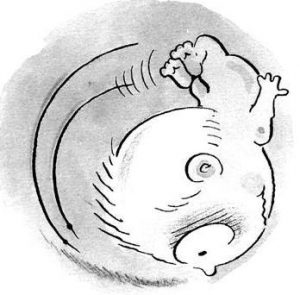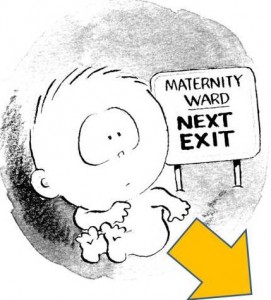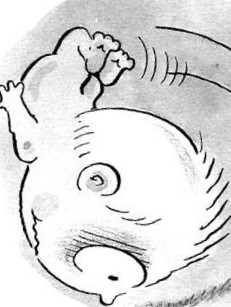 As you progress through pregnancy the baby’s position becomes a more important consideration. At about 30 weeks about 25% of babies are not in a “cephalic” (head down) position. It is normal for the baby to turn head down even by about 34 weeks. So don’t worry!
As you progress through pregnancy the baby’s position becomes a more important consideration. At about 30 weeks about 25% of babies are not in a “cephalic” (head down) position. It is normal for the baby to turn head down even by about 34 weeks. So don’t worry!
It is a concern if the baby is not head down at 36 weeks and beyond. This does not mean that spontaneous turning will not happen. Indeed occasionally a baby can turn even as late as the onset of labour.
Why are most babies head down?
A singleton baby’s position is related to the size of your baby and the size and shape of your uterus.
In early pregnancy, there is plenty of room for your baby in the uterus and so there is no reason why your baby should be head down. As the pregnancy becomes more advanced there is less room for your baby to move in your uterus and so your baby wants to adopt a more comfortable position. As the buttock area is greater, a more comfortable position is for the buttock area to be at the top (“fundus”) of the uterus and the head to be towards the pelvis.
If your uterus has been overstretched because of previous pregnancies, if you have excessive amniotic fluid (“liquor”) in your uterus or your baby is unusually small then your baby may be quite mobile in advanced pregnancy. We refer to this an “unstable lie”.
If you have an abnormality of the uterus such as a fibroid protruding into your uterine cavity or you have a uterine shape abnormality, or you have an unusual shape to your pelvis then your baby can be prevented for adopting a head down position. If you have twins often one is not head down and sometimes both.
What can be done about it?
 There is no need for concern until more advanced pregnancy. The reasons need to be considered as to why your baby is not in a head down position. I will monitor you each visit with an ultrasound scan so we can monitor your baby’s position.
There is no need for concern until more advanced pregnancy. The reasons need to be considered as to why your baby is not in a head down position. I will monitor you each visit with an ultrasound scan so we can monitor your baby’s position.
If your baby has been breech and turns to head down spontaneously, then this is a very encouraging sign. It usually then stays head down. If your baby remains breech toward the end of the pregnancy, then there is usually a good reason. A procedure (“external cephalic version“) to try to turn your baby around to head down can be done, but only after a careful ultrasound scan and giving you a medication to relax the uterus. External cephalic version will be done very carefully and with close monitoring on the labour ward/birth unit of your baby and you with the procedure. This is because studies have shown the external cephalic version procedure has risk to your baby’s wellbeing because it can cause an umbilical cord accident, placental separation and preterm labour. Also, it is generally considered that the babies who turn easily with external cephalic version procedures would have turned anyway and the so the procedure was not necessary.
If the lie is unstable and you go into labour or your waters go then you must attend the labour ward/birth unit immediately so your baby’s position and presentation can be checked and umbilical cord presentation/prolapse can be excluded. Sometimes with an unstable lie, a careful stabilising induction is a safer option than waiting for spontaneous labour onset.
Also see my video titled ‘When will my baby turn head down?‘


